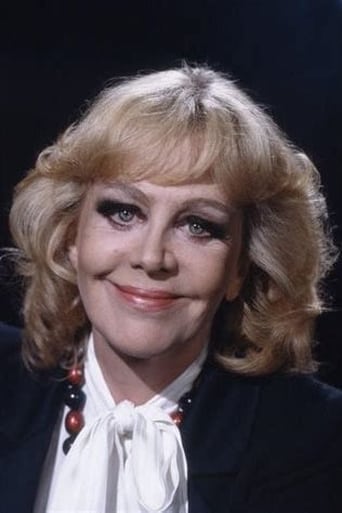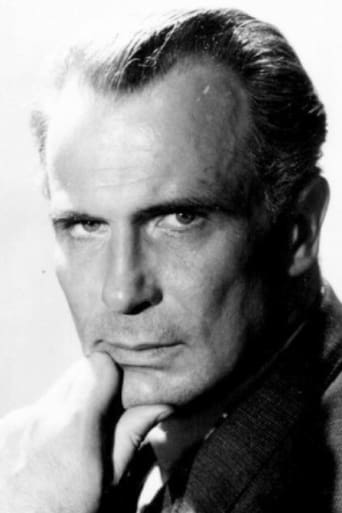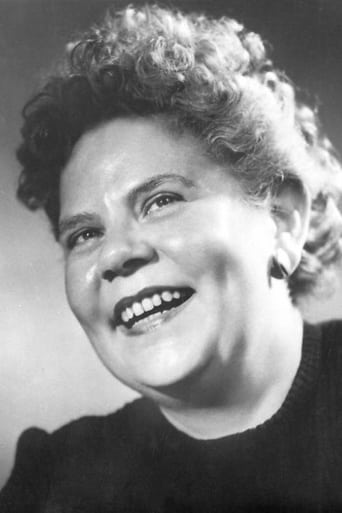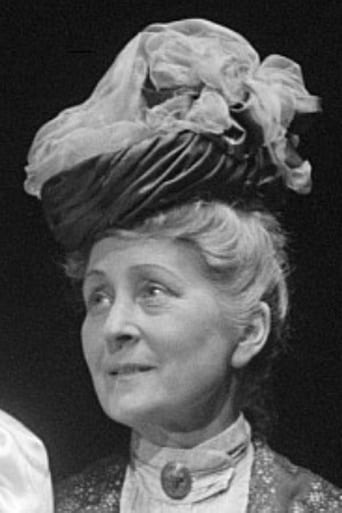CommentsXp
Best movie ever!
Fairaher
The film makes a home in your brain and the only cure is to see it again.
Ella-May O'Brien
Each character in this movie — down to the smallest one — is an individual rather than a type, prone to spontaneous changes of mood and sometimes amusing outbursts of pettiness or ill humor.
dlee2012
Die Mörder Sind Unter Uns was made in the immediate aftermath of the Second World War and is a brave film to present to a Germany grappling to come to terms with twelve years of horror under the Nazi regime.Filmed partly on location, it is a sad and eerie pictorial record of the almost completely destroyed remnants of the once-beautiful city of Berlin. This location filming would have grounded the film very much in the here-and-now for the original audience, who would be able to identify with the characters' plight as they themselves struggled to survive from day to day amongst the rubble with the ever-present threats of starvation, disease and the occupying forces.Techniques taken from film noir are applied in this radically different context to great effect, emphasising the bombed cityscape's desolation as a backdrop for these damaged characters to play out their roles against. Just as stark is the music, which comes in short bursts throughout the film.The film's moral conundrum centres on what kind of justice should be meted out to the war criminals from the old regime. A doctor, shell-shocked and disillusioned, has lost his will to practice, feeling that saving individual lives is hopeless after the large-scale military massacres he has witnessed.His life becomes entangled with that of a former concentration camp detainee who tries to restore his will to live and heal his shattered nerves. He then comes across a former army officer, who ordered a massacre, living without any remorse not far away.Hildegard Knef is in fine form in this early role. Her radiant, youthful beauty stands in stark contrast to the bleak wreckage-strewn landscape around her. She is able to put suffering behind and help guide the broken doctor onto the path of redemption.There is a wonderful irony in the scene in which the doctor, preparing to kill the army officer, is instead called away to save a life.In saving the young girl, he is also recalling himself to life. The scene also serves to highlight the terrible effects of war: Berlin, formerly the most civilised and cultured city on the planet, no longer has basic medical supplies or equipment and it is the innocent civilians who are the ones who are suffering.Also ironic is the fact that the atrocity which haunts the doctor happened at Christmas. The military had turned a time of reconciliation and hope into a time of butchery. Perhaps the director is indicating that humanity had not matured one iota since Herod's massacre of the innocents.The end scenes, whilst melodramatic, are effective. The Doctor's shadow looms like an angel of vengeance over the military officer, dwarfing him as he shrivels from an arrogant leader and his cowardly inner nature is exposed. Knef intervenes at the last moment, dissuading the doctor from carrying out his vengeance attack and the army officer is instead taken into custody for a formal investigation and trial.Knef's pleas are more effective than those from most virtuous heroines given her own background as a concentration camp survivor. Her concern for the doctor leads her to realise revenge will be a path of destruction. These themes are highlighted by the end of the film, in which the camera zooms from a row of graves (presumably those of the civilians butchered in the army massacre) onto a single crucifix as a portent of Christ's own suffering and forgiveness.Ultimately, this film shows the after-effects of the war on civilians. The effects are both material as they pick up their broken lives in their shattered city that lacks even basic infrastructure and medical supplies and psychological, as they attempt to deal with the traumas they have experienced. Ironically, it is the perpetrators of the war, who seem to have suffered least, feeling no guilt or remorse and picking up their lives more easily than the humble civilians.More generally, the film raises questions of the role of justice. Is it a form of vengeance or is there more to it than that? A court hearing may help heal the mental wounds the victims have experienced and uncovering the truth of what happened may allow the City to move forward. Likewise, hopefully by its unflinching look at the horrors of the past half-decade, this film helped to heal the suffering citizens of Berlin, too, and helped them face the future with hope of redemption.
findoc88
This film is certainly worthwhile for a serious student of movie history, given its circumstances. The first film released in post WW-II Germany, etc...Yes, the plot line development is predictable from the midpoint of the film onwards. And sure, there are the side-stories regarding post-war German guilt and apologia and its role in the making of this film. I'll give you all of that.But the reason a movie lover wants to watch this film is two-fold. One, the stark B/W cinematography of this film is deeply affecting and very unique for the time period. And two, the wonderful, sublime beauty of a young Hildegard Knef. She is so fragile in this film, it's a real contrast with her later persona of the German song chantreuse of the 60s.It's hard to find this movie on DVD, but it's out there. If you find it to buy or rent, give it a watch, well worth the time. 8/10 rating.
zetes
Immediately after WWII, Italy and Japan developed strong national cinemas. The same thing didn't happen in Germany. I really didn't know they made any films in the aftermath, but apparently they did. The Murderers Are Among us was made just the year after Germany lost the war. It's quite a strong film, feeling a lot like the film noir style that was all the rage in America at the time (which, in turn, was heavily influenced by German silent cinema). Ernst Wilhelm Borchert plays an alcoholic doctor who is haunted by his participation in the war. He hooks up with his new roommate (Hildegard Knef), which helps him a little, but then he runs into his former commanding officer (Arno Paulsen), which sends him into an angry, murderous downward spiral. The film is actually thinly veiled propaganda, expressing that not all Germans (be they soldiers or civilians) were okay with wiping out entire Polish villages or, you know, the Jews. Eh, maybe I can accept that, but, taking the film as some kind of apology, it all feels a tad too little too late. I do, however, like the appeal for peace and justice, as opposed to revenge. The last thing the world needed at the time was more violence. The filmmaking is very beautiful. Sometimes it feels like a dry run for The Third Man. I don't know if Carol Reed saw this film, but one filmmaker who most certainly did was Lars von Trier. His film Europa cribs from this one pretty liberally at times, most notably the image of a snowfall in a bombed-out church.
dbdumonteil
"Die mörder sind unter uns" takes place in Berlin in ruins and features three main characters:Susanne (Hildegarde Knef),a survivor from the concentration camps;a former army medical officer,haunted and tormented by what he did and saw;a former nazi officer who feels no remorse because "he used to obey".Susanne ,played by gorgeous Knef,wants to pick up the pieces.She's the strongest character of the movie .She comes back from hell,so what could be worse?To her Xmas means forgiveness and she knows that death breeds death.When he sees her take care of the seedy flat,the doctor first shrugs,but soon he will use his radiographs to replace the panes. Biggest flaw:it's impossible to believe that Susanne is just out of a camp:actually she seems to go out of a beauty parlor.The doctor is a human wreck who heavily drinks to forget the war horrors.It's only when he meets again his former superior that he rouses himself from his lethargy.Although he feels hatred and thirst of revenge,he is not devoid of compassion:when he takes the man he wants to kill to a desert place among the ruins ,he heeds the call of a desperate mother:it's the most emotional sequence of the movie.On the other hand,the officer behaves as if the war had never happened:the parallel between the two Xmas celebrations(past and present) climaxes the movie .The director chose a good-natured actor,nothing like the nazi villain we generally meet.The directing shows Fritz Lang's (and expressionism) influence:the huge shadow on the criminal recalls the little girl with the balloon scene in "M".And along with "the third man",the movie had a strong influence on two movies: -"the man between"(1953),another Carol Reed movie :James Mason's character resembles the doctor of this movie.-and mainly,mainly, Rosselini's "Germania anno zero"(1948),which dwarves "die mörder sind unter uns".People who enjoyed Staudte's movie should see the Italian genius's masterpiece.




